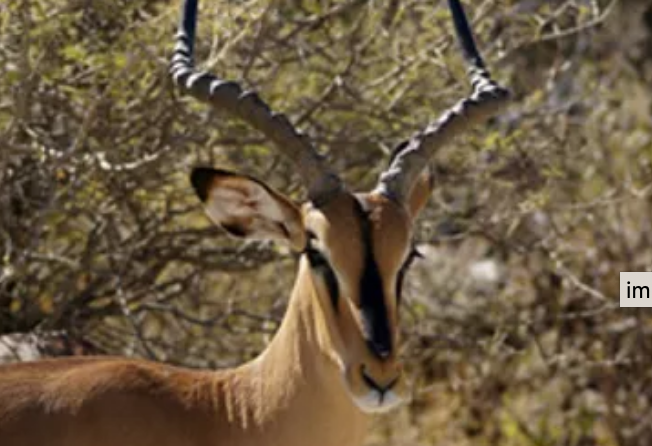Ranch Wildlife
Whitetail Deer
Whitetail Deer are the most hunted big game animal in North America, and one of the most coveted trophies in the world. Estimated at over 4 million strong, the Texas Whitetail herd is the biggest of any US state or Canadian province. Roughly 800,000 hunters currently pursue deer in Texas each year. Whitetail on Walking Horse have been greatly benefited by the strict management plan we committed to years ago. We are seeing fully native Hill Country deer reach score of 120-170+ at maturity. We are introducing genetically superior whitetail deer to help bring the quality of the herd up even more. Under the MLDP program we can hunt deer five months each year, October through February.
Blackbuck Antelope
Blackbuck are native to India, Pakistan and Nepal and were brought to Texas as early as the 1930’s. Blackbuck are hearty little animals and one of the fastest on earth making them extremely resilient to harsh conditions and predators. Blackbuck horns are considered trophy once they approach 18”. Females remain a tan/brown color all of their lives while males transition from tan to black over the head, neck and back at sexual maturity. In India hunting of Blackbuck is prohibited to do dwindling numbers in the wild. Blackbuck meat is outstanding.
Axis Deer
Also known as the Chital or Spotted Deer, Axis are native to India and several bordering countries. Axis are typically larger than whitetail and can live much longer. Like Blackbuck, the meat is outstanding. Axis is one of the most sought after exotic trophies and very popular among those hunting big game in Texas.
Fallow Deer
Fallow deer are native to many parts of Europe and the Middle East. In the last century, Fallow have been introduced to the US and Canada, South America, Australia, New Zealand and even Africa. Hunters covet Fallow for their very large, palmate antlers, smaller but similar to moose. On Walking Horse, Fallow tend to follow the same rut and antler cycle as whitetail.
Scimitar - Horned Oryx
Oryx are native to North Africa and are essentially considered extinct in their native habitat. Fortunately, they thrive in North America with herds existing in Texas and in a handful of other areas in the American southwest. Their long swept back horns make outstanding trophies and the meat is very good. Hunters must remember, that while they have been essentially hunted to extinction in Africa, they thrive here in Texas.
Addax Antelope
Like the Oryx, Addax are native to North Africa, once roaming from the Atlantic to the Nile. Addax are critically endangered in their home region but like the Oryx, they thrive here in Texas. Addax are well adapted to heat and drought, can grow up to 300 lbs and are pursued by trophy hunters for the long, spiraled horns.
Eland
Eland (also called common eland or southern eland) are one of the largest species of antelope in the world and native to the countries of southern and eastern Africa. Males can stand 5’ at the shoulder and weigh more than 2,000 lbs. Eland are known for spiraled, yet relatively short horns that grow thick and heavy by maturity. In some parts of Africa, eland have been domesticated and utilized for meat and milk and primary source of leather.
Mouflan
Mouflan are a sub-species of wild sheep (like the urials) originally ranging from the Caucasus, Crimea Peninsula, and the Balkans, east to mountainous regions that are now northern Iraq and Iran. Mouflan have been introduced all over the world over the last 3000 years and are believed to be one of the two ancestors to modern domestic sheep. Mouflan are have beautiful brown and tan saddled coats and the males grow curved back horns, similar to a big horn sheep, that can reach over 30”.
Aoudad (Barbary Sheep)
Aoudad, or Barbary Sheep, are native to North Africa, primarily in desert mountain region of the Sahara. Aoudad were introduced to Texas and New Mexico in the 1950’s and have thrived in the environments found in the Texas Hill Country, West Texas, and New Mexico. Aoudad grow large, curved back horns and long flowing mane from the neck down the front legs, providing for an outstanding trophy mount. Male Aoudad can reach over 300 lbs. at maturity.
Wildebeest
Wildebeest are native to sub-Saharan Africa, with the largest herd in the Serengeti. Annually, over 1.5 million wildebeest migrate west and then return to grasslands in the fall when the rains come. White-bearded Wildebeest is the specific species found on Walking Horse. Large bulls can stand 5’ at the shoulder and weigh over 600 lbs.
Gemsbok
Also native to southern Africa, Gemsbok are one of the largest African antelope and one of the most prized by trophy hunters worldwide. Long spiraled horns run almost parallel and remain straight as opposed to the Oryx or Addax. Gemsbok bulls can reach over 500 lbs and are also well adapted to heat and drought conditions.
Impala
Impala antelope are native to Southern Africa, occupying the savannas and bush country, typically growing up to 130-140 pounds 38-40” at the shoulder. Impala thrive in environment found in the Texas Hill Country and South Texas, not un-similar to the terrain and climate of their native Africa. Impala males grow lyre shaped horns that can reach over 35”, making them a valued trophy for hunters worldwide.
Texas Dall Sheep
Texas Dall are a hybrid species of Corsican and Mouflan sheep. They are typically bright white in color. The males grow manes on the lower part of the neck as long as 8”. The horns are circular and typically grow 28-35” in mature rams. Rams can weigh up to 160 pounds depending on diet. Texas Dall make for a great looking trophy at more economic price.
Corsican Sheep
Corsican Sheep, like the Texas Dall, are a hybrid species of Mouflan sheep and several other breeds. Their coats are typically brown/tan with black accents on the neck, heads, and legs. Corsican males grow beards up to 8”. The horns grow circular and outward at the tips and reach up to 35” or more in mature males. Rams can weigh up to 160 pounds depending on diet. Like the Texas Dall, Corsican rams make for a great looking trophy at a more affordable price.
Wild (Feral) Hogs
Wild hogs in Texas can be traced back to the first Spanish settlers to come to inhabit the region. Wild, or feral, hogs were once domestic hogs that either escaped captivity or were purposely released. Some ranchers later introduced European or Russian hogs into areas in the US for the purpose of hunting, which in turn inter-bred with existing feral hogs creating hybrids. Although hogs are damaging and destructive, many hunters enjoy pursuing them for both the meat and trophies.
Rio Grande Turkey
Rio Grande Turkey are the only species of turkey native to central Texas. These birds thrive on the Walking Horse Ranch. Turkey can be seen year round with the largest numbers of birds encountered in the spring months.
















